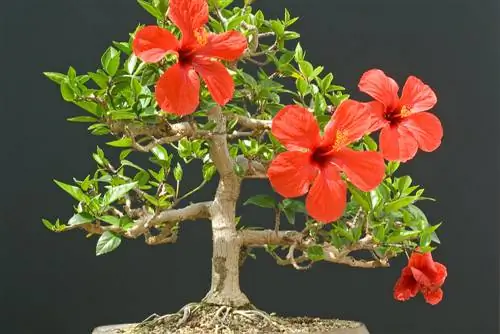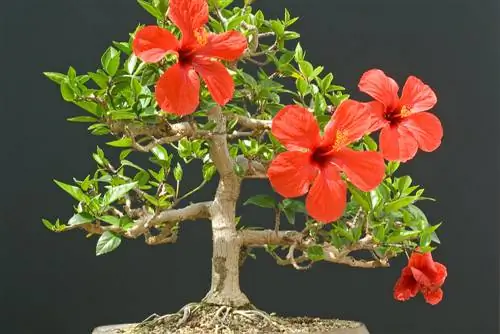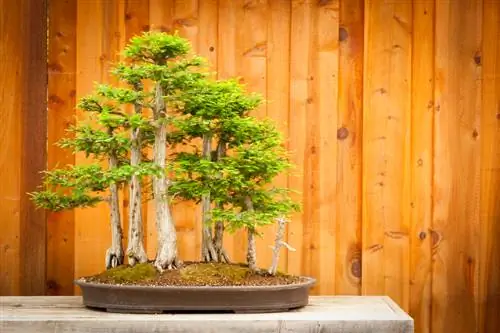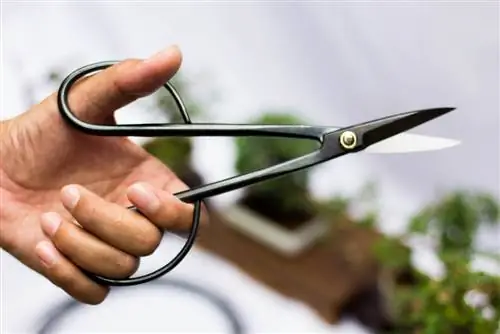- Author admin [email protected].
- Public 2023-12-16 16:46.
- Last modified 2025-01-23 11:22.
Among the bonsai trees, the marshmallow stands out for its splendor of flowers. If the conditions are right, the species blooms throughout the season. It's not just Hibiscus syriacus that provides good bonsai material. The Chinese rose marshmallow can also be used for this art.

How to care for a hibiscus bonsai?
To properly care for a hibiscus bonsai, you should regularly prune, repot into new substrate, water and fertilize adequately. For successful overwintering, the hibiscus bonsai needs a protected place in a cold house or outdoors, under trees.
Design
With a little patience and the right techniques, a hibiscus can be shaped into a bonsai. The large individual flowers look particularly attractive between the densely leafy shoots.
Wiring
The marshmallow tolerates shaping with bonsai wire well. While older branches break easily due to their strong woodiness, the elastic young branches quickly spring back to their original shape. In this case, it is necessary to additionally fix the shoots with guy wires.
Cut
In order to minimize the size of the leaves, the tree is pruned regularly. Choosing small-leaved varieties will save you time and effort on pruning. Start pruning early so that the tree branches well. During the growth phase, continually cut back new growth to one or two leaves. To enjoy the splendor of the flowers, you should no longer use scissors from June onwards.
Repotting and root cutting
Place the hibiscus in new soil every year so that it is supplied with sufficient nutrients before each growing season. If the temperatures are mild and the tree is already in the growth phase, pruning the root ball makes sense. Shorten excessively long roots and ensure a balance between root system and crown.
Ideal substrate conditions:
- retains moisture and is loose
- organic and mineral material in equal proportions for young plants
- older trees prefer higher amounts of Akadama soil
Care
Hibiscus, like other bonsai plants, requires a little more care. This species only produces many flowers if the environmental conditions are right and the requirements are met.
Pouring
Once the substrate surface has dried, the hibiscus requires water. Water the mini tree vigorously and thoroughly until the substrate is saturated. Waterlogging must not occur, which is why the bonsai pot must have drainage holes. Drought is just as damaging and causes the tree to drop its buds before flowering.
Fertilize
If you don't repot the bonsai every year but every two to three years, regular fertilization is recommended from spring to September. Give the mini tree liquid fertilizer (€4.00 on Amazon) with the irrigation water every 14 days. Fertilizer cones are an alternative with a long-term effect.
Wintering
The outdoor bonsai likes to spend the mild season in a sunny to partially shaded spot on a balcony or terrace. Since the marshmallow in a bonsai pot is slightly sensitive to frost, you should place the tree in a protected place such as the cold house during the cold winter months. You can also place the tree in the ground under trees without a bowl.






